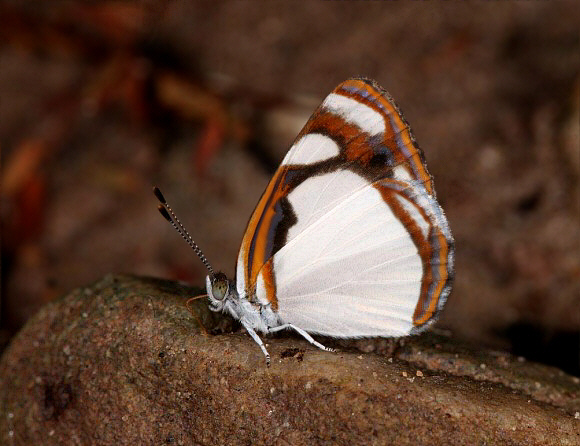 Dynamine agacles, Peru – Tony Hoare
Dynamine agacles, Peru – Tony Hoare
Introduction
The Biblidinae are known for their diverse but simple and colourful patterns. In the neotropics their representatives include the subtribe Eubagina, within which are placed the 40 Dynamine species.
around the basal areaMost Dynamine species have metallic bluish or greenish uppersides, with a dark apex and a series of white spots. The upperside of agacles, myrrhina, coenus, theseus, anubis, ate, athemon and one or two others however are white with dark borders and only a trace of blue around the basal area.
The greatest diversity of Dynamine species is found in the Amazon basin, but the distribution of the genus ranges from Mexico to Bolivia.Dynamine agacles is distributed from Panama to Argentina.
Habitats
This species is found in lowland rainforest at altitudes between about 100-800m.
Lifecycle
The eggs of most Dynamine species are white. They are laid singly on the leaf axils or flower buds of Euphorbiaceae genera such as Tragia and Dalechampia. The larvae are described by DeVries as being slug-like, with tiny rosettes of spines on the back. The pupae are greenish, elongate, with a slightly bifid head and a pronounced dorsal keel, and suspended by the cremaster from stems or leaves.
Adult behaviour
The butterflies are only active in hot sunny conditions, when they can be seen flying rapidly in zig-zag fashion along sunny tracks in the mornings. During the afternoon males visit dry river beds, well vegetated rocky river beaches and damp ground along sunlit forest tracks and roads.
The wings are normally kept closed, but they periodically fan them as they flit about from spot to spot on the ground, probing for mineral-rich moisture.
